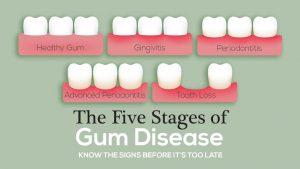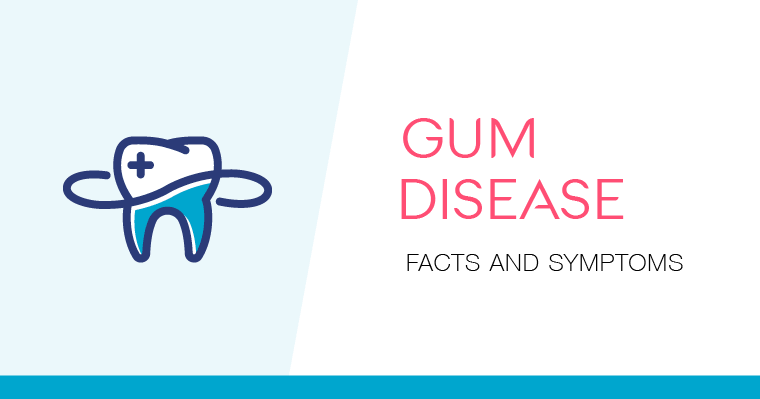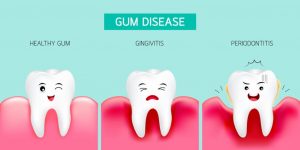Table of Contents
ToggleGum disease is a major cause of tooth loss and pain. It is a severe condition that can lead to tooth loss, other health problems, and even death. It’s also a preventable disease that you can treat easily at home. It’s caused by bacteria in your mouth that can invade the tissues around your teeth, causing them to become infected. While it’s rare for gingivitis to progress to full-blown periodontitis (or severe gum disease), it’s important to know what signs you should be watching for and how you can keep yourself from getting sick.
What is gum disease?
Gum disease is an infection of the gums. It’s caused by plaque, which forms when bacteria on your teeth slowly build up over time. If left untreated, the buildup can lead to bad breath, gum inflammation, and tooth loss.
Plaque is made up of dietary debris and saliva that accumulates in the sulci (fissures) between your teeth where they meet each other. Plaque contains bacteria that can cause gum disease if left unchecked; this causes inflammation in the gums and eventually leads to periodontal pockets — pockets that form around your teeth as they wear away over time due to lack of brushing and flossing habits
Causes of gum disease
Gum disease is caused by poor oral hygiene, such as not brushing your teeth for long enough or using the wrong toothpaste. You can also get gum disease if you have diabetes, a condition in which your blood sugar levels are too high.
Bacteria that live inside your mouth may damage the protective layer of tissue around each tooth (enamel). When this happens, it’s easier for bacteria to enter and cause inflammation around the tooth surface – called gingivitis. This can lead to more serious conditions: gum disease (also called periodontitis), when pockets form beneath your gums that block blood flow; or even bone loss around affected teeth.

Gum disease is a serious problem that can affect your overall health. The symptoms of gum disease are red or swollen gums, bleeding gums, bad breath, and loose teeth. Tooth loss may also result from this condition.
How to prevent gum disease
- Daily flossing is a great way to keep your gums healthy and prevent gum disease.
- Use a soft-bristled toothbrush that you can comfortably use in the morning, evening, and at bedtime. Be sure to brush for two minutes at least twice daily—including when you’re getting ready in the morning or after lunch (to remove food particles). This will help remove plaque so it doesn’t build up on your teeth and lead to an infection in your gums or mouth.
-
Fluoride toothpaste actively kills the bacteria responsible for cavities, thus reducing tooth decay. However, it is important to note that not all fluoride types are equal in their effectiveness.
When choosing a fluoride toothpaste for daily brushing, consider whether it contains carbamide sodium (the most common type), sodium monofluorophosphate (SMP), strontium fluorophosphate, or sodium fluoride. These ingredients have an impact on how well the toothpaste interacts with other orally taken medications, such as antibiotics, as they can potentially alter their effectiveness against bacteria found in plaque formation around teeth. This is particularly relevant as many individuals experience yearly infections due to inadequate dental care practices over extended periods.
How to treat gum disease
Gum disease is a severe condition that can lead to tooth loss, other health problems, and even death. It’s also a preventable disease that you can treat easily at home. Otherwise, a dentist can clean and treat the gums and teeth with dental instruments, remove plaque buildup on tooth surfaces, and advise you about how to prevent future problems.
Suppose you have a lot of tartar or calculus (calcium deposits) on your teeth. In that case, your dentist may recommend using mouthwashes or rinses that contain chemicals that dissolve these materials away from the surface of your teeth.
The treatment is known as scaling or scaling and polishing, and it proves useful for significant tartar build-up. However, it is not as necessary for minor amounts present in areas that might potentially cause discomfort in the future.
Preventing Gum Disease with Proper Oral Hygiene
Oral hygiene includes brushing your teeth twice a day, flossing once a day, and regular dental visits.
Bacteria in the mouth invade between the gum line, causing inflammation of the gums and pockets of inflamed tissue under your gums. This invasion results in bleeding when you brush or floss and leads to gum disease.
Plaque buildup restricts space for healthy bacteria, forcing them into infected pockets, and causing redness and swelling. It’s hard to tell when you have it, but there are ways to prevent it and even reverse it sometimes!









